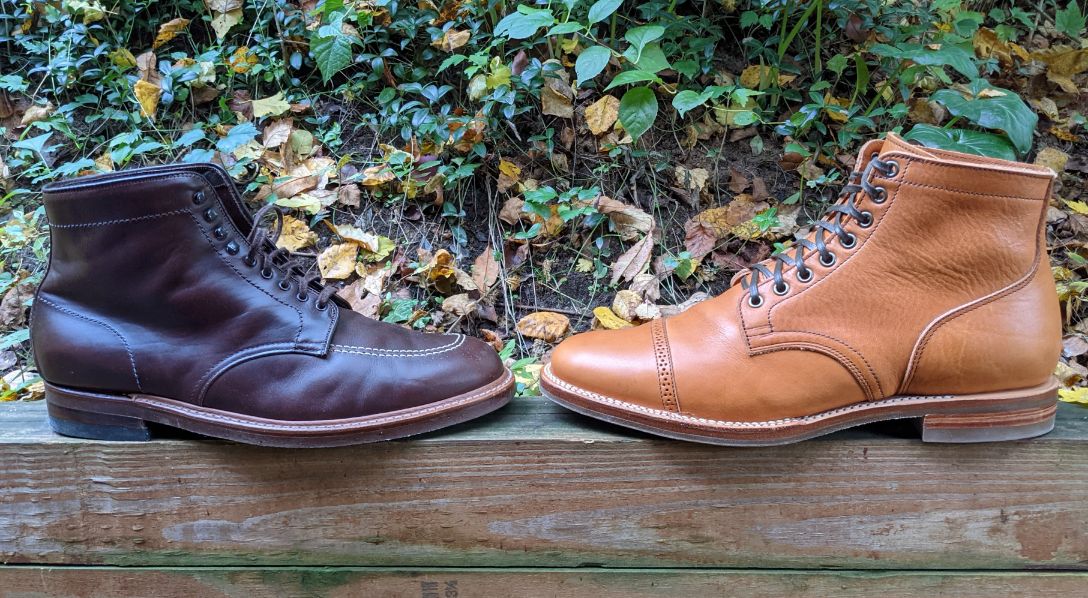Alden vs. Viberg: Blue Blood or Blue Collar
If you’re anything like me a few years back or hundreds of other men, you decided you wanted a pair of nice boots. You’ve read everything posted on r/goodyearwelt for the last 5 years, and have accepted that you’re going to need to drop more than $500. This is your first pair of boots, so you don’t want to go crazy. Those Wesco engineers look cool on screen, but you’re not sure if they will work with a button down and chinos in your business casual office. No, like anybody who’s done the research, you know there are really only two options here. The Alden Indy and the Viberg Service Boot.
Which do you get if you can only pick one between the Alden and the Viberg? Let’s dive in.
The Contenders: East Coast vs. West Coast

In the Blue Corner, you have the Alden Indy [check out the 100wears full review here]. The Indy originally started out as a true work boot, but it’s long since shed any pretense of being the everyman’s choice for hard labor. Instead, Indys are displayed in mahogany-clad stores in cities like Washington D.C. Sold by men wearing finely tailored suits. If you visit the factory, you’ll find them being expertly polished next to oxfords and penny loafers.
The Indy feels perfectly at home among the elite universities of New England. Poke around a few Alden retailers and you’ll certainly find the words “old world craftsmanship” more than once. They have a “practicality first” vibe that for some reason can only be found on things that people don’t use for their practical purpose.

In the Red Corner, we see the young contender – the Viberg Service Boot [check out the 100wears full review here]. Despite their price, Viberg never really tried to shed that blue collar work-boot image. In fact, Viberg still owns the domain “workboot.com”. They sell CSA and ESR rated boots made in the same factory as their heritage line. However, in an interesting juxtaposition to the Indy, the Viberg Service Boot was never meant to be a tool.
From the beginning, the Viberg Service Boot put design at the forefront. The first moc up of the shoe went to a shop that describes themselves as “trendy”. The places selling Viberg are much more likely to have concrete floors, selvedge denim jackets, and beanies. This is the type of shop that was born on the West Coast, and has thrived in the Americana revival.
The Story
Alden Indy:

The Alden Indy has been around for so long that nobody really seems to be sure exactly when they were first made available. The foot balance system that is advertised on the heel debuted before 1970’s, and Indys – then known simply as “the work boot” – have been in advertisements since the 1950’s.
Speaking of those advertisements – they must have worked, because they caught the eye of a young carpenter named Harrison. He loved them so much that he insisted on wearing them in one of his next jobs: playing Indiana Jones.
Since then, the Indy boot (now named after the movie character) was on its path to stardom. Over time there were a few improvements. A new leather option here, a different lining there, but through all of it Alden kept the key details the same.
The popularity of the Indy only grew from there. In the 1990’s, Alden tightened their distribution network. This further grew the allure of these boots as they became harder and harder to get. This, combined with the explosion in #menswear on the internet in the 2000’s was a perfect storm. For many, the Indy became the go-to boot.
People have tried to copy the Indy, but only as a cheaper alternative. Nobody has tried to take on the Indy in its price range and lived to tell the tale.
Viberg Service Boot:
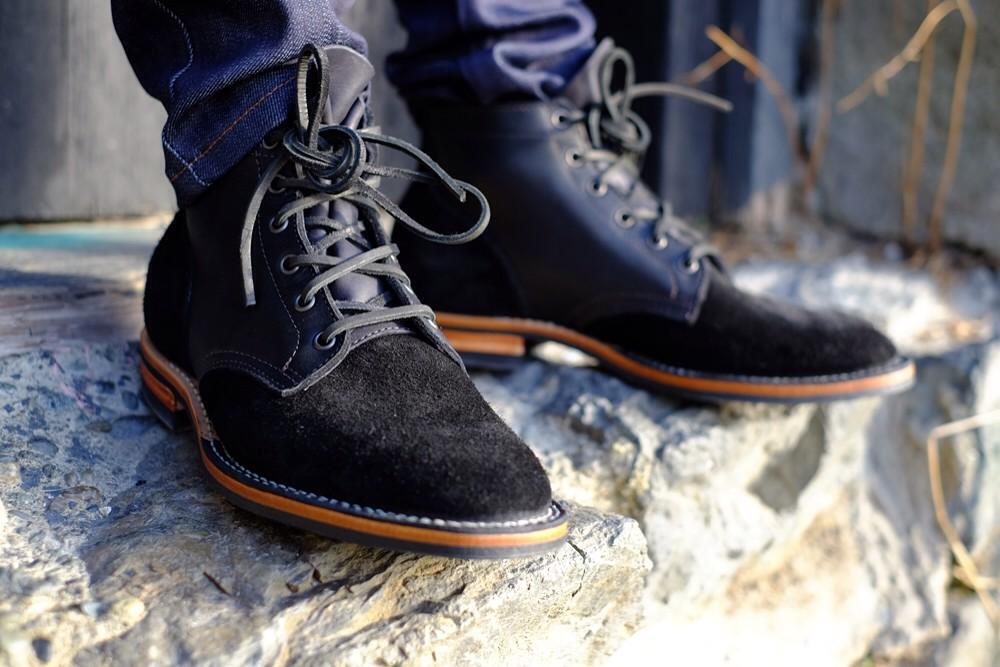
As a comparative newcomer, Viberg seems young when placed next to Alden. That being said, I don’t think anyone thinks that 90 years of history counts for nothing. However, while Viberg the brand has been around for some time, the Service Boot itself is much newer.
Due to it’s age, we know a lot more about the history of the Viberg Service Boot. Brett Viberg first got the idea to make a service boot as we know it around 2006. Before then there was a boot called the “service boot,” but that was much more like the workboots coming out of White’s and Nick’s than a fashion-focused boot. It was 8 inches tall, had a spring toe, and Brett famously said they didn’t sell a single one.
While the idea started way back in 2006, wasn’t until 2010, in partnership with a store known as 4 Horsemen, that the Service Boot as we know it came out. It was a phenomenon. Demand for the shoe exploded and started a service boot craze that is still going on today.
While Alden has cleared its lane, Viberg has taken on a number of challengers and has systematically vanquished them.
The Build
Alden Indy:
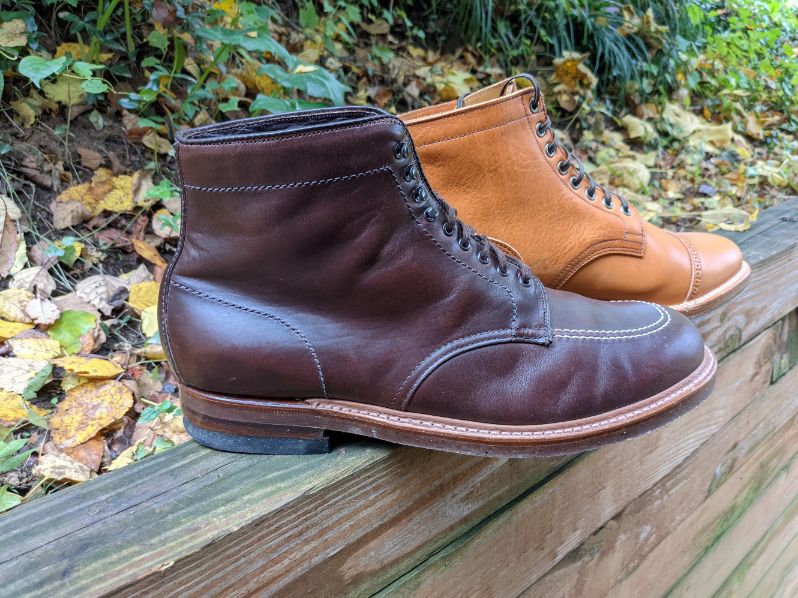
Alden figured out how to build the Indy a long time ago. They don’t really care what you have to say about it. This comes with some major upsides. Buying an Indy will all but guarantee exceptional quality. The complaints you see are that Alden uses a box that’s too small and will scratch the shoes and… that’s about it.
Not to discount the issues with the too small box, but you simply don’t hear about anything really wrong with these. Upper stitching will be clean, clicking will be great, and the welt stitching will be almost eerily even. Even those who buy seconds generally never know why. Alden holds themselves to the highest standards.
The flip side of this, though, is that Alden really doesn’t care what you have to say. The make up choices for the Indy remain extremely limited, with a handful of leather choices for the upper, and a few outsole choices. Looking for a veg tanned upper or a Dainite outsole? Too bad, buy something else. Alden even goes so far as refusing to change between the three options when you resole.
If you decide you can live with what Alden is offering, you’ll get a goodyear welt construction. This ensures that you will easily be able to throw a new sole on. Your neighborhood cobbler should be able to keep the Indys going for decades.
If the Alden Indy was a restaurant, it would be Soup Kitchen International. They are the inspiration for the Soup Nazi in Seinfeld. Changing their recipe is borderline offensive to them, but you and the 30 people in line ahead of you know that jumping through their hoops is totally worth it.
Viberg Service Boot:
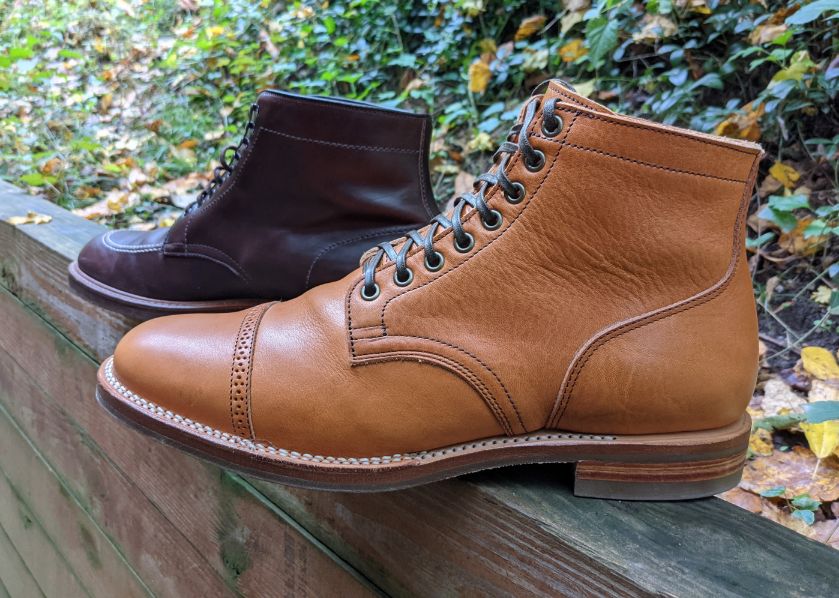
Viberg is on the other end of the spectrum. When they first hit the scene, you could go into just about any stockiest and put together almost any combination you could think of. While they have moved away from this model, the variety available is still nearly unheard of to the Alden faithful.
Chromexcel, Horsehide, Veg Tanned, Calf, Suede, Kudu (the real kind, not the cow kind Alden uses), Deer, Water Buffalo, Rare Shell. If they can tan it, it’s probably been on a Viberg Service Boot at some point. The options don’t stop there. Just about every kind of outsole made today can be had on a Viberg Service Boot.
These options also allow a lot of flexibility in the type of boot. One make-up could be heavy s***-kickers. Another might trade some of that durability for leather soles and unlined suede. If you can’t find a Service Boot that you like from Viberg, then you probably can’t find a Service Boot you like anywhere.
If you guessed that this sort of customization comes with a cost, you’d be right. Where as the other shoe in this comparison is all but guaranteed to be perfect, Viberg falls elsewhere on that scale. Even ignoring a few years back when they were having real QC issues, the best pair of Vibergs is going to have a bit of wonky stitching here or there, or a misstamped eyelet.
As for the construction itself, Viberg uses a stitchdown-style construction. This has the odd combination of looking more robust, while actually representing a more delicate form of bootmaking. While a skilled craftsman can keep a sitchdown boot going for as long as a goodyear welted one, that still means you need to make sure you have a skilled craftsman.
If Viberg were a restaurant, it’d be a hip downtown fusion spot with the chef singling dishes in the middle. There are a ton of great choices, but know that you might find some unexpected jalapenos in your chicken teriyaki.
The Fit
Alden Indy:
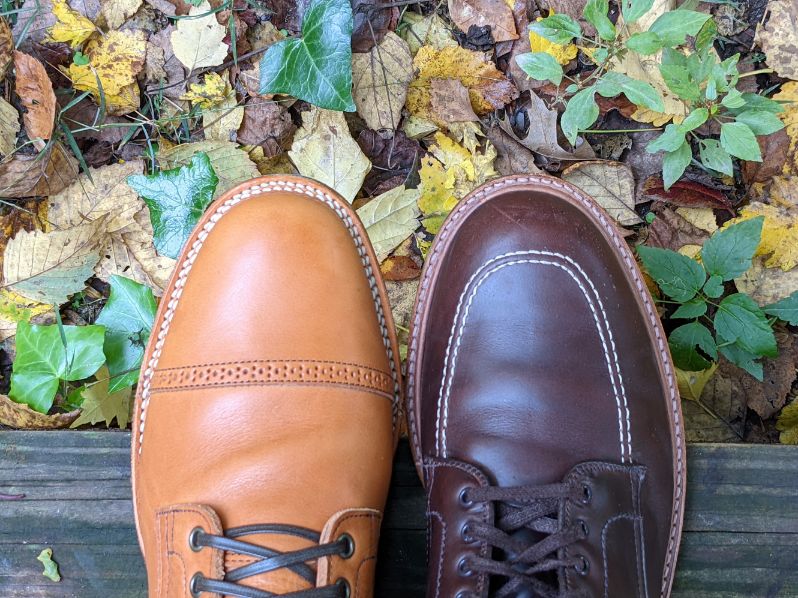
The Alden Indy, at least on it’s typical TruBalance last, is an extremely forgiving boot to wear. With a wide toebox and narrow heel, it’s designed to let your foot move naturally while still holding the boot in place. For me personally, it is the best fitting last I’ve ever worn.
Most people suggest sizing a half down, though I personally found that I get better results going true to brannock. The shape is designed to be loose in the forefoot, even Alden stockists say go true to size.
Viberg Service Boot:
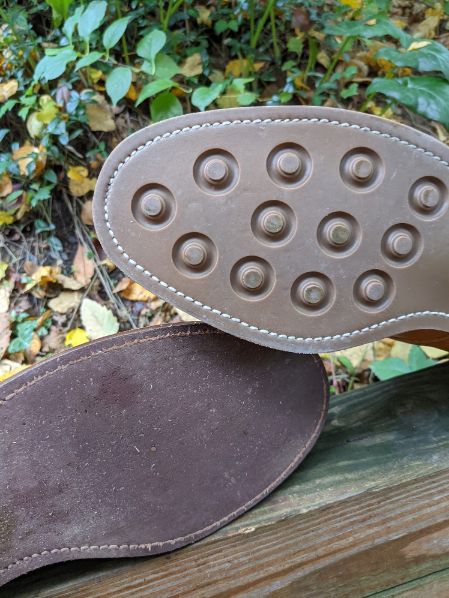
The Viberg Service Boot has been made on a half-dozen lasts over the past 10 years, but the most common is going to be the 2030. Finding the right fit on this last is pretty difficult. The 2030 is long but also features an almond/pointed toe design. If it doesn’t grip your foot, it’s pretty easy to slide forward and crush your toes.
Personally, for a generic 2030-lasted Viberg, I suggest sizing down at least a half size for this last – maybe a full size if you have narrow feet. However, with the variety of materials used for the upper and outsole I’ve found that every Viberg I’ve tried on has fit at least a bit different, and sometimes up to an entire half size different. This is really a shoe you want to try on before buying if you can.
The Price
Alden Indy:

Starting at $579 and going up to $849, the Indy boot is going to be the cheaper option between the two. Alden keeps strict price controls over how their retailers price their products, so the price of the Indy is going to be extremely consistent from stockist to stockist. Even price increases are set by Alden and go into effect at a specific date, including old stock.
That being said, while the Alden Indy starts off less, it’s much more difficult to find a deal. Those strict price controls means retailers don’t have much leeway in offering sales. Generally, discounts of more than 15% or so are either because a retailer made a mistake (shout out to J.Crew x Alden) or because they have decided to end their contract with Alden and don’t really care about what Alden says anymore.
The other option is go shop for seconds through TheShoeMart. This will drop the price to $400, and the quality is often undistinguishable from firsts. One oddity of Alden’s pricing is that seconds do regularly go on sale during the typical sale holidays, though generally only for an extra $25 off.
Viberg Service Boot:
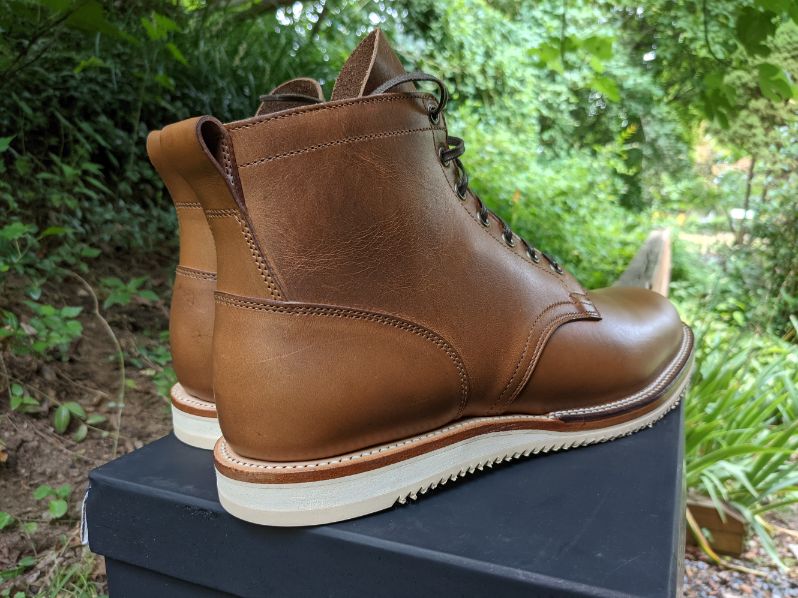
As a brand, Viberg doesn’t have nearly the same control over their retailers that Alden does, instead setting an MSRP and letting the retailers figure it out from there. This means prices can change a lot from location to location. At time of writing the base price of the Viberg Service Boot seems to run from about $760 (and that same brown chromexcel boot is available at other retailers for $725, and $743), all the way to $1,760.
The brand also sets their MSRP for when they ran that shoe, meaning deadsock older pairs could be significantly less than the same make up made more recently.
This inconsistency also is seen in sales. With each maker able to set their own discounts, prices can change wildly based on how much a brand needs to move stock. Viberg themselves even holds in-person events for leftover products where prices can reach 70% off on the last day (assuming you find something you still want at that point).
Which is Right for You?
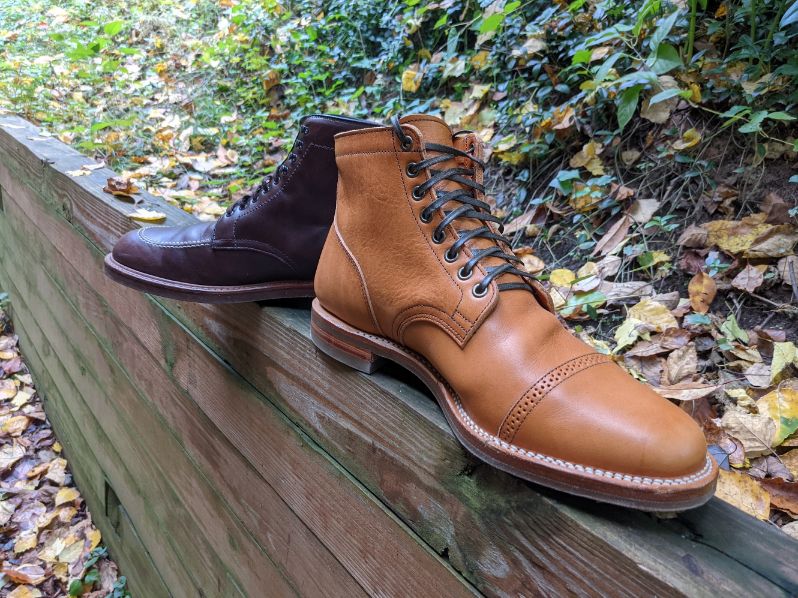
It’s clear that both the Alden Indy and Viberg Service Boot will have most – if not all – of what you’re looking for in a boot. You’ll almost certainly be happy with either one. That being said, these boots are not the same thing with different brands slapped on the insole.
The Alden Indy took its work boot heritage and kept polishing it until they turned coal into diamond. Their extreme level of comfort was so impressive that they were able to land one of the biggest product placements in movie history not through dollars, but because the actor refused to work in anything else. While still an extremely casual shoe, they give an air of sophistication that is hard to replicate. At the same time, assuming you don’t want to spend months deal hunting, they will be the more affordable choice.
The Viberg Service Boot was made for the modern world. It’s a boot that has a shape that will flatter everyone, and with it’s countless options, you will be able to find a pair that works with both your style and life. Viberg continues to tinker with the design, and allows their stockists to do the same. This means that in many ways the Viberg Service Boot continues to improve. And, when it doesn’t, the end result is some really great prices when they try to move those designs.
While I’d love to say that you should buy one or the other, the real answer is that the right one is whichever speaks to you. No matter which you pick, you’ll be getting a quality product with a long-standing brand to back it up. You really can’t go wrong.
Besides, you’ll probably end up picking up both soon enough.

